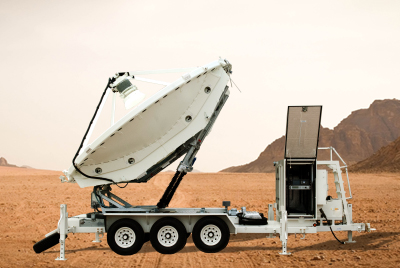October 25th, 2021 - Mobile Antenna Systems: A Comprehensive Guide to Future Use and Innovation
Mobile antenna systems are the future of emergency preparedness and connection in rural and remote areas. These tech solutions are an integral part of the technology, development, and preparedness sectors, providing new means to communicate in the event that normal communication is disrupted. In this post, we explore what constitutes a mobile antenna system, the benefits that they bring, and the future use of mobile antenna systems.
Mobile antenna systems are designed to provide a streamlined communication and set-up experience in rural areas. These machines can often be set up by a single person or a small crew, and can be trailer packaged or airlifted to previously-inaccessible remote areas. This solution has made it possible to connect even the most underserved or remote areas of the world and is playing a large role in the ability to introduce new populations to the arena of broader communication.

Added benefits of mobile antenna systems are that they are meant to withstand weather changes and inclement conditions. While other permanent antennas provide the same solutions of communication, there can be interference or service disruption if the conditions are less than ideal. Mobile units are able to withstand more, and provide added mobility for ease of access and set up. Often, these units do not require special tools or skills to erect and are completely self-managed upon their setup. This is an added benefit, as crews will not have to continue to go to the area and complete preventative or service-based maintenance. This is a benefit, as this can save hundreds of thousands of dollars in specialist fees, equipment, and travel costs to the location of the mobile antenna systems.
Another benefit is the ability of the antenna to serve as an additional beacon of communication in the event of a global emergency. These mobile units can fortify a country’s infrastructure, specifically if the region is considered to be remote. A strong connection to the outside world will be important in the event of a large-scale national emergency, and investment into a mobile antenna system can help mitigate the risk of a loss of access to the outside world.
The final benefit, that makes mobile antenna systems a valuable asset to invest in, is the ability to erect the structures on vehicles or mobile command units. This proves useful for the installation of communications in a normally serviceless area, as one can simply place and set up the antenna wherever and however it is needed. This sort of flexibility in installation expands the applicable zones service providers may consider, bypassing any expensive costs to transport, or otherwise work in, systems that lack a similar mobility.
The future is bright for mobile antenna systems, as engineering experts work to streamline design, make mobile systems even more user-friendly and compact, and further pursue new applications of this technology. Further investment into research and development can lead to better designs and also better functionality in even more complex conditions. Ultimately, this can lead to the saving of countless lives and hundreds of thousands of dollars. Where do you think the future of mobile antenna systems will take us?
Authors: John Reynolds and Cody Cole
